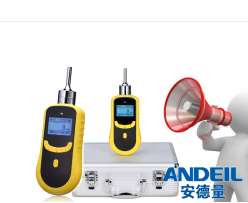Portable combustible gas detectors are also widely used. If you want to reduce the occurrence of faults, you need to understand the precautions for the use of portable combustible gas detectors.
The precautions for the use of portable flammable gas detector mainly include the following aspects:
â– Because the portable flammable gas tester is a precision instrument and has strict requirements on the ambient temperature, you must pay attention to whether the ambient temperature meets the requirements of the instrument when using it.
â– The tester should be handled gently to avoid violent vibrations, so as not to damage the sensitive components of the instrument.
â– The sensor window should be kept unblocked to prevent clogging.
â– When using pump suction sampling, prevent water or other liquids from being sucked into the tester.
â– Before use, you must check whether the instrument is in good condition. You can use alcohol vapor to check whether the instrument alarms and sensitivity.
â– The tester must always be kept in good condition. After each test, check whether the instrument returns to zero. If it does not return to zero, the zero point must be readjusted in clean air to confirm
Keep the analysis data accurate.
â– Analysts must stand in the upwind direction when they go to the field test, first test the surrounding environment of the hot spot, and then test the specific parts of the hot spot after reaching the hot spot conditions.
The tester produced by the manufacturer is greatly affected by the gas pressure, which is likely to cause false alarms of the tester, so the analysis and test personnel should pay attention to the size and change of the airflow pressure.
â– The instrument must be used under the condition of sufficient power. Charging must be performed in a safe place. It is strictly forbidden to charge the instrument in a place with danger of explosion.
â– As the sensor probe of the tester gradually ages during use, the sensitivity decreases, so the instrument must be returned to the manufacturer for maintenance and re-calibration after one year of use.
â– When the instrument itself fails and cannot be used normally, it is strictly forbidden to dismantle and repair it privately, and it must be repaired by professionals. 
Water reducer is a Concrete Admixture that can reduce the water consumption for mixing while maintaining the slump of the concrete unchanged. Most of them are anionic surfactants, such as Lignosulfonate, naphthalenesulfonate formaldehyde polymer and so on. After adding the concrete mixture, it can disperse the cement particles, which can improve its workability, reduce the unit water consumption, and improve the fluidity of the concrete mixture; or reduce the unit cement consumption and save cement.
Sodium Gluconate,Citric Acid,Acrylic Acid,Sodium Polyacrylate
Shenyang East Chemical Science-Tech Co., Ltd. , https://www.eastchemy.com
